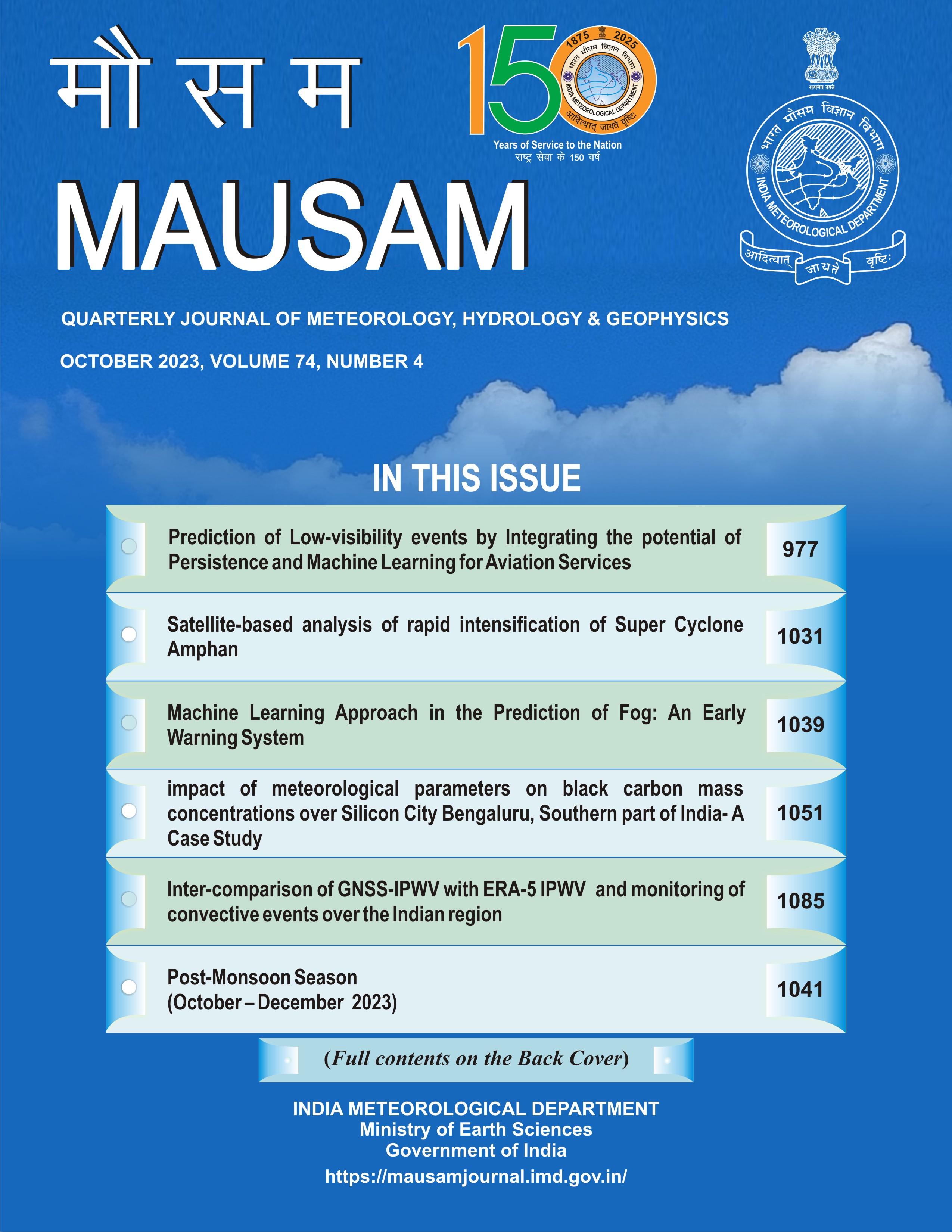Lightning activity in India an important cause of increase in fatalities
DOI:
https://doi.org/10.54302/mausam.v75i4.6048Abstract
With Recent increase in deaths due to lightning activity in India we are posed with a question - are these fatalities related to increase in the lightning activity owing to climate change? The IPCC report (2013) projects global warming of 1-5 °C by the end of 21st Century. The global warming is closely related to increased concentration of greenhouse gases. Previous studies have shown that on different temporal and spatial scales small increases in surface temperature leads to increase in thunderstorm and lightning activity. The lightning induced deaths are on the rise especially in the tropical south Asia and Africa but IPCC report does not explicitly deals with lightning activity and its future projection. Studies on this aspect become all the more important as the subgrid scale phenomena such as convective clouds and hence lightning are poorly resolved and taken in to account by climate models.
In order to address this issue we have analyzed trends of lightning activity, surface temperature, upper tropospheric water vapour, cloud ice, Convective Available Potential Energy (CAPE) and aerosols. We also present correlation of these parameters with lightning activity using lightning flash rate data of Lightning Imaging Sensor aboard TRMM, TRMM Level -2 Precipitation Radar data, gridded temperature data of IMD, aerosol data acquired by MODIS.
The result indicates that upper tropospheric temperature rise is more than surface temperature rise. This imply stable atmosphere with fewer thunderstorms. The increased convection transports additional water vapour into upper troposphere. The water vapour acts as green house has by absorbing infrared radiation emitted by the surface of the Earth. This results in more warming in the upper troposphere than at the surface and stabilizing of the atmosphere. However, results also show that within the thunderstorm the instability measured by CAPE is positively correlated with lightning activity.
This paradox of stabilization of global mean atmosphere with increase in lighting activity leads us to conclude that tough thunderstorm activity has subdued but those develop are much more explosive producing more lightning activity and perhaps lead to more fatalities.
Downloads
Published
How to Cite
Issue
Section
License
Copyright (c) 2024 MAUSAM

This work is licensed under a Creative Commons Attribution-NonCommercial 4.0 International License.
All articles published by MAUSAM are licensed under the Creative Commons Attribution 4.0 International License. This permits anyone.
Anyone is free:
- To Share - to copy, distribute and transmit the work
- To Remix - to adapt the work.
Under the following conditions:
- Share - copy and redistribute the material in any medium or format
- Adapt - remix, transform, and build upon the material for any purpose, even
commercially.



